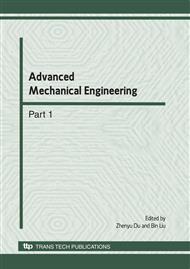p.123
p.127
p.131
p.135
p.139
p.145
p.149
p.155
p.159
Calculation of Inverse Kinematics Problem of a 5-DOF Rehabilitation Robot for Upper Limb Based on Screw Theory
Abstract:
A novel 5-DOF rehabilitation robot for upper limb, which can implement single joint and multi-joint complex motions and provide activities of daily living (ADL) training for hemiplegic patients, was presented. Based on the method of screw theory, the rehabilitation robot’s kinematics model was set up according to the 5-DOF rehabilitation robot for upper limb. For the kinematics model set up by the method of screw theory, the inverse kinematics calculation was realized by using Paden-Kahan sub-problem method and algebraic elimination method, and the result of explicit solution was given. It offered reliance for the actual intellectual control of the position and speed about the rehabilitation robot.
Info:
Periodical:
Pages:
139-144
Citation:
Online since:
June 2010
Authors:
Price:
Сopyright:
© 2010 Trans Tech Publications Ltd. All Rights Reserved
Share:
Citation:


